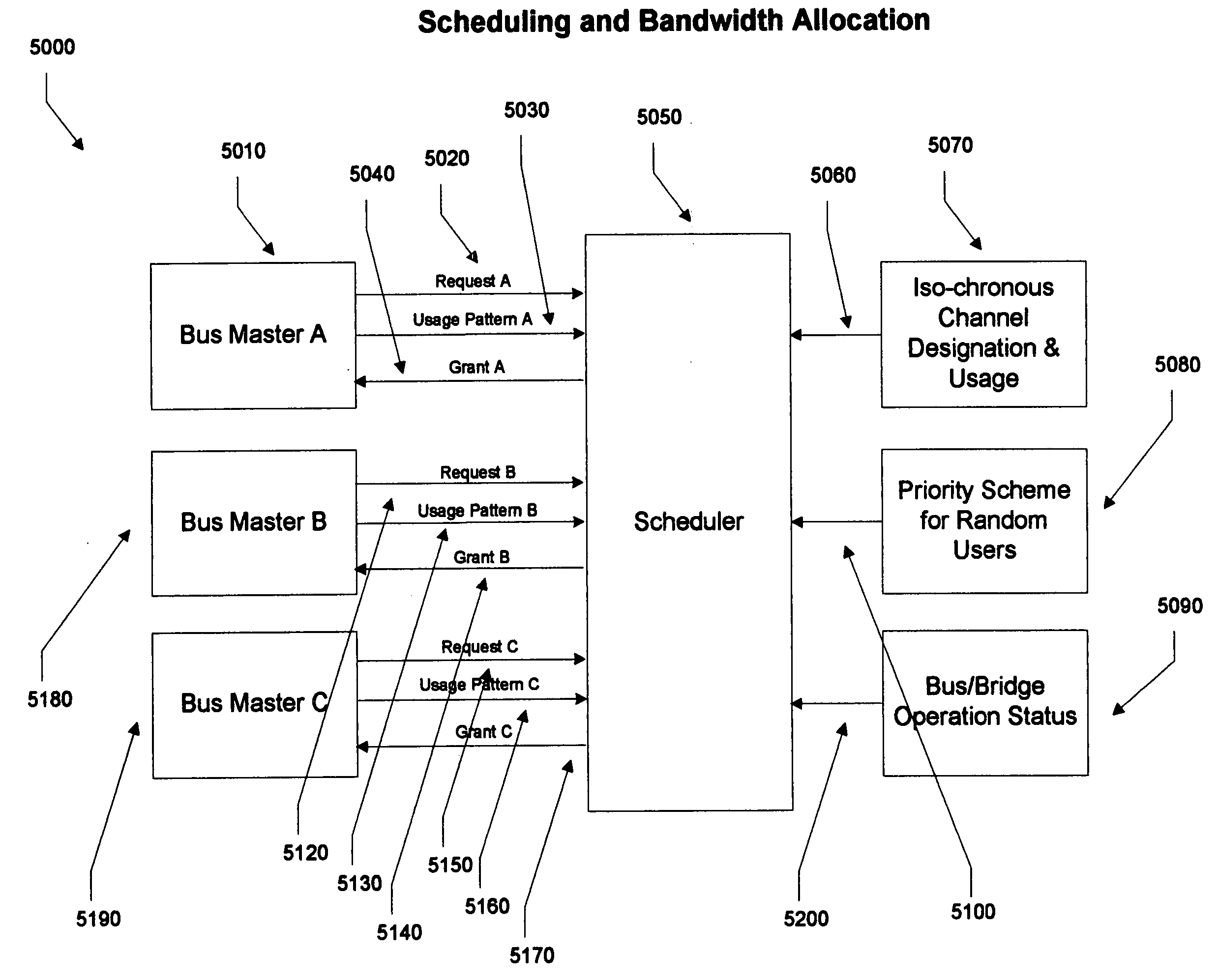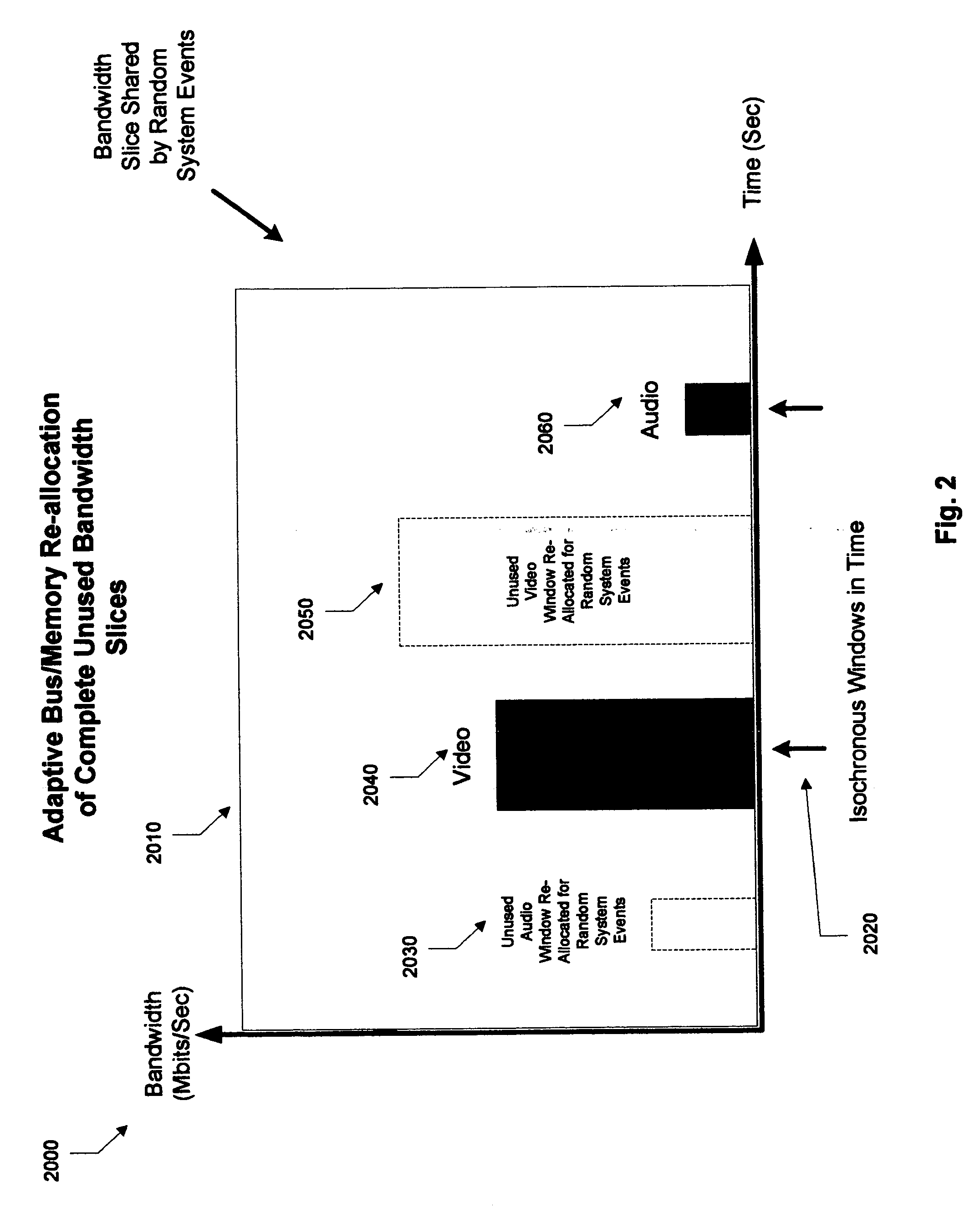Adaptive bandwidth allocation over a heterogeneous system interconnect delivering true bandwidth-on-demand
a heterogeneous system and bandwidth technology, applied in the field of adaptive bandwidth allocation over a heterogeneous system interconnect delivering true bandwidth-on-demand, can solve the problems of failure to deliver performance and functionality as promised, failure to communicate effectively among various on-chip system components (processors, memory subsystems, special hardware functions) and regardless of programmable architectures
- Summary
- Abstract
- Description
- Claims
- Application Information
AI Technical Summary
Benefits of technology
Problems solved by technology
Method used
Image
Examples
Embodiment Construction
[0048] Referring to FIG. 1, the system 1000 of the present invention shows a bandwidth slice 1010 which encapsulates an audio stream packet 1030, another audio stream packet 1060, a video stream packet 1040 and another video stream packet 1050. The packets 1030, 1040, 1050, and 1060 occupy varying bandwidth windows within a given period of time. These packets are further encapsulated by a first isochronous window, another isochronous window and a final isochronous window. This encapsulation protects the priority and bandwidth allocation of the given packet. The time outside these windows are open for any random system event to use. Random system events are un-protected within the isochronous encapsulations and they only use available time slots outside the windows.
[0049] Referring now to FIG. 2, the system 2000 of the present invention includes a bandwidth slice 2010 which encapsulates an audio stream packet 2030, another audio stream packet 2060, a video stream packet 2040 and ano...
PUM
 Login to View More
Login to View More Abstract
Description
Claims
Application Information
 Login to View More
Login to View More - R&D
- Intellectual Property
- Life Sciences
- Materials
- Tech Scout
- Unparalleled Data Quality
- Higher Quality Content
- 60% Fewer Hallucinations
Browse by: Latest US Patents, China's latest patents, Technical Efficacy Thesaurus, Application Domain, Technology Topic, Popular Technical Reports.
© 2025 PatSnap. All rights reserved.Legal|Privacy policy|Modern Slavery Act Transparency Statement|Sitemap|About US| Contact US: help@patsnap.com



